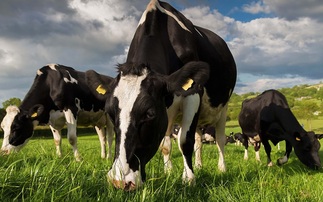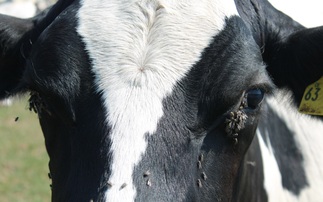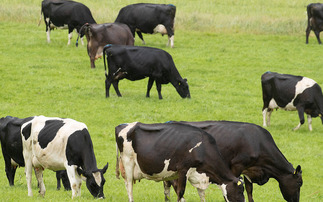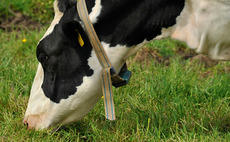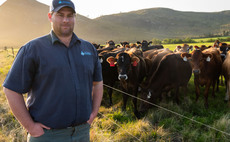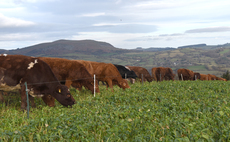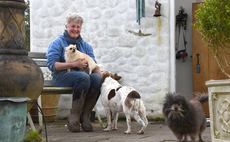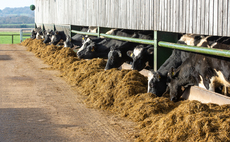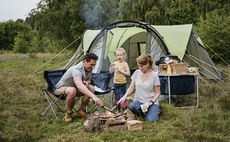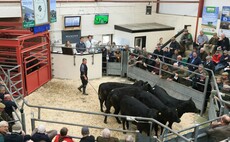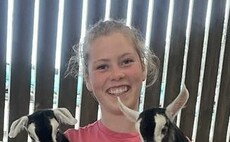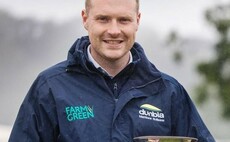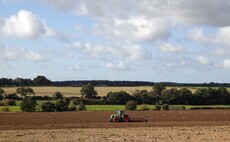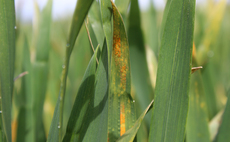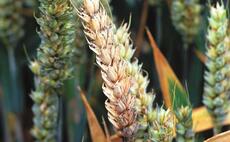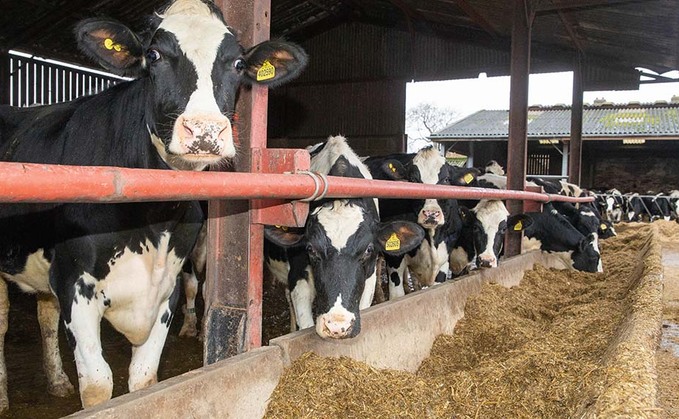
Producing your own haylage, rather than buying-in dietary straw, could bring numerous benefits.
With straw likely to be expensive this year following poor autumn establishment, producing home-grown haylage could be a good option for farmers looking to gain control of feed inputs.
Krone's James Duggleby believes producing haylage on-farm makes more sense compared to buying-in straw, which is of low nutritional value and is often inconsistent.
He says: "Straw can be very variable quality and often needs chopping.
"If you've got grass on farm, why not make haylage? You can make it yourself, probably with your own equipment, so you can be more in control of quality and production costs."
Haylage is ‘in-between' silage and hay and is usually cut at 45-55% dry matter and big baled to undergo fermentation.
At 45-55% DM the crop typically analyses at 12-13% crude protein, 60-65 D-value and 9.5ME.
In comparison, wheat straw analyses at around 89% DM, 3-4% crude protein, 6-7% ME and 38 D-value.
The best time to cut haylage is in August-September when the nutritional value of grass is lower and quality first cut is in the clamp.
Haylage's high dry matter does add to preservation challenges as it is difficult to achieve a rapid drop in pH and thus an effective fermentation.
Principles
Mr Duggleby describes it as ‘an easy crop to get wrong' and emphasises the importance of adhering to some basic principles at harvest.
These focus on encouraging an effective fermentation.
He adds: "This is about utilising the grass you have on your farm and not being beholden to an external supply.
It is about getting the most from your grass.
Can you make haylage to put into the feed mix to get more milk from forage?"
Case Study: Haylage provides dry cow solution
Producing a dedicated, low potassium haylage crop has solved milk fever issues at Craigie Mains Farm, Kilmarnock, while providing a fibrous, palatable forage for dry cows.
About four years ago, the farm's 370-cow herd was struggling with milk fever issues, which was leading to issues with retained foetal membrane and displaced abomasums.
"Our issue here is high potassium forage," explains Graeme Kilpatrick.
"We were doing DCAB, high straw diets, but we were always having issues with milk fevers - and really serious milk fevers.
It was not uncommon for cows to get three to five bottles of calcium." Potassium blocks magnesium absorption which is essential for the mobilisation of calcium around calving.
As a result, high potassium can lead to milk fever issues.
After speaking to other farmers who had got on well with haylage, Mr Kilpatrick decided to produce a dedicated haylage crop from ground that had not received slurry and was subsequently low in potassium.
A block of land, six miles away from the main farm proved ideal.
Baled haylage was also attractive as the farm did not have the clamp space for a low potassium silage crop.
Mr Kilpatrick also thought a high dry matter haylage bale was better for rumen health than baled silage.
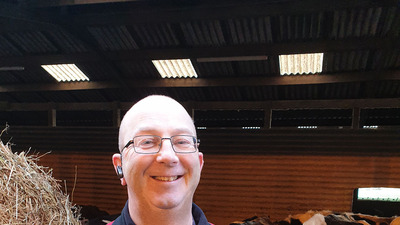
There is a nice, sweet smell." Compared to straw, haylage is also more palatable and does not necessarily need chopping, although Mr Kilpatrick is considering chopping this season to aid intakes.
For maximum palatability, he also believes harvesting haylage no drier than 40% DM is a must, otherwise fermentation becomes a challenge and there is increased risk of mould.
The team takes two cuts of haylage a year from 34 acres of ground.
This is usually cut around mid-June and late-August and is taken off mature leys, which were initially planted as a hay mix for horses.
Moving forward, the aim is to sow a specific mix for haylage, although the exact makeup is yet to be decided.
About 50 units of a 27:5:5 fertiliser is applied for each cut.
Mr Kilpatrick believes tedding the crop out two to three times is vital to achieve the target dry matter.
This is particularly the case considering the farm receives an average 42 inches of rainfall a year.
He has found it is better to ted at a lower rotor speed after the first pass to stop the crop from ‘lumping up.' Bales will be double wrapped as a minimum, although three to four layers will be used if the crop is particularly stemmy.
The bales are also wrapped in the same place they are stacked so they are only handled once.
Both of these actions help reduce plastic puncture risk.
Since feeding the low potassium haylage to dry cows, milk fever is now a rarity.
"We still give calcium boluses, but it's very rare to give a calcium bottle and cows are calving without assistance and are happier," says Mr Kilpatrick.
Haylage-making tips
Ken Stroud, Volac business manager for South England and Ireland and James Duggleby of Krone, share their tips on making the best possible haylage:
- Use quality grass.
- Haylage is often produced off poor ground. It should be treated like any premium crop. Cut when grass is just at the heading stage, not once it is old and stemmy
- Aim for 45-55% dry matter. It is better to go wetter and wilt for less time than compromise quality and leave it to wilt for several days
- Carry out at least two passes with the tedder to facilitate an even wilt (depending on weather)
- Opt for a high-density baler. This will aid consolidation, which is essential for optimum preservation in a dry crop like haylage
- Make sure you achieve a flat profile across the bale.This will avoid air pockets and make it easier to stack
- Be aware of puncture risk. Wrapping in the field is best for fermentation, but can add to the risk of punctures
- Use four layers of wrap, ideally six
- Use a film rather than a net wrap and then wrap on top. Net can get pockets of air in it
- Consider chopping. You do not have to keep haylage long. Chopping to three inches can aid consolidation
- Always use an additive.
The high dry matter crop, combined with baling, means it is difficult to drop the pH below 5.5, which can create fermentation often needs chopping.
"If you've got grass on farm, why not make haylage? You can make it yourself, probably with your own equipment, so you can be more in control of quality and production costs."
Haylage is ‘in-between' silage and hay and is usually cut at 45-55% dry matter and big baled to undergo fermentation. At 45-55% DM challenges and allow yeasts and moulds to propagate as soon as the bale is unwrapped.
This means an additive is a must. Opt for EcoCool for crops <50% DM. When the crop is >50% DM, use Double Action EcoBale, which includes two strains of bacteria, as well as potassium sorbate (a food and feed grade preservative) to knock out yeasts and moulds.












